

For many years, wool has been seen as a waste product of sheep farming rather than an asset. This is to be expected when wool prices don’t even cover the cost of shearing. But there is a growing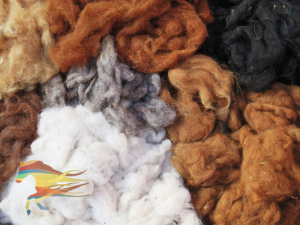 movement towards sustainable fashion and a resurgence of crafting that could provide the ideal opportunity for farmers to turn wool into a profit generator rather than a waste bi-product. However, tapping into this new market requires effective farm marketing for your wool business.
movement towards sustainable fashion and a resurgence of crafting that could provide the ideal opportunity for farmers to turn wool into a profit generator rather than a waste bi-product. However, tapping into this new market requires effective farm marketing for your wool business.
Check out this blog to find out how one farmer has managed to turn their wool into profit.
Instagram is a good choice of social media platform for wool businesses for a few reasons. Firstly, its reliance on visual content means that businesses that can take regular good-quality images will do well, and wool businesses are ideally placed to benefit from this. Secondly, Instagram is home to a large crafting community who are highly engaged and often work collaboratively as a community. This offers an ideal setting for smaller businesses to thrive as a culture of supportive and ethical buying exists.
The key to success of any farm marketing strategy is to have clear goals and objectives. The same goes for your Instagram strategy: what do you want to gain from marketing your wool business on Instagram? Possible options could be:
All of these goals will require slightly different strategies and tactics from your farm marketing. You should also consider how these goals align with your wider goals for your wool business. For example, increasing views or “reach” on Instagram won’t necessarily lead to a direct increase in sales. So, consider how these goals play into your wider wool business strategy.
As part of your wider farm marketing strategy, you may wish to consider blog content. Check out this blog for ideas on content for your wool business.
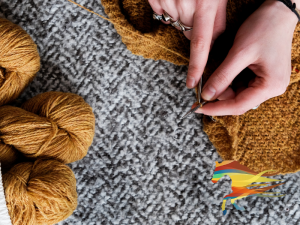 We can fall foul of thinking of Instagram users as teenagers, but the truth is that teens have now moved onto platforms such as TikTok, and the majority of active Instagram users are now aged between 20 and 40. This means that active Instagram users are predominantly millennials and some older Gen Zs.
We can fall foul of thinking of Instagram users as teenagers, but the truth is that teens have now moved onto platforms such as TikTok, and the majority of active Instagram users are now aged between 20 and 40. This means that active Instagram users are predominantly millennials and some older Gen Zs.
These are people who have careers and are likely established in their living situation. They are also increasingly likely not to have children and to be more willing to spend money on experiences, hobbies or experience-led products. They are also more likely to be educated consumers and to make purchase choices that they see as being ethical. This can include trends such as the increase in plant-based diets, but it can also include trends towards buying more locally and choosing high-welfare animal products.
Instagram also benefits from having a strong crafter community, which can be extremely valuable for wool businesses if leveraged effectively.
The key to marketing to this type of customer is to communicate your story and educate them on why you are an ethical choice.
This type of customer will buy into businesses that show their storytelling skills and can therefore create an emotional response from the viewer. This could include explaining the background of your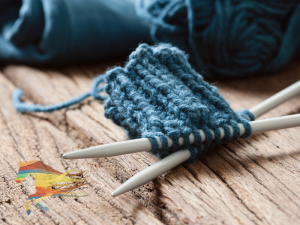 farm and family. Maybe you are a 6th generation farmer who is trying to save their family farm through farm diversification. Or maybe you are a new entrant who is striving to create a new type of livestock farm business and just needs a break.
farm and family. Maybe you are a 6th generation farmer who is trying to save their family farm through farm diversification. Or maybe you are a new entrant who is striving to create a new type of livestock farm business and just needs a break.
Consider the brand story that you want to present and make sure it is authentic to you. You can somewhat Disneyfy your brand story or simplify it to make it a clearer and more impactful farm marketing tool. But you must make sure it never becomes inauthentic. This generation of consumers believes strongly in buying from authentic businesses and looks beyond the traditional marketing hype.
Instagram users from the crafter community also respond well to educational content or brands that are seen to be collaborating and engaging with the wider crafter community. This could include using loyal fans as test knitters for new patterns or teaming up with other complementary businesses on Instagram. Make the educational content fun and highly accessible. You can extend this relationship-building by answering questions in the comments and encouraging followers to send you questions.
Once you have engagement from your audience, make sure you build on it: reply to all comments and, where possible, try to start a conversation. So often I see businesses respond to comments with a simple emoji or with a “thank you”. Try to go one better: can you ask a follow-up question? Or can you give them additional feedback or information?
This need for responsiveness also goes for your messages on Instagram. If a customer contacts you through Instagram messages, try to reply as soon as you can. If you struggle to do this, you can set up automated replies that should answer the most common questions and show the customer that you aren’t simply ignoring them.
Broadly speaking, content for social media falls into a few categories; the names often vary depending on where you read about them, but we like to call them the following:
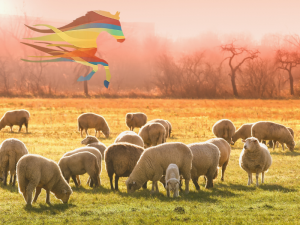 To successfully use Instagram as part of your farm marketing, you should include a mixture of all these content types in your marketing. It can be useful to set a goal of a certain number of each per week. The best mix does vary somewhat between different farm businesses but, as a starting point, aim for 1 of each per week plus 1 extra sales post. This would give you 5 posts per week, and you won’t be repeating yourself as they come from different content types.
To successfully use Instagram as part of your farm marketing, you should include a mixture of all these content types in your marketing. It can be useful to set a goal of a certain number of each per week. The best mix does vary somewhat between different farm businesses but, as a starting point, aim for 1 of each per week plus 1 extra sales post. This would give you 5 posts per week, and you won’t be repeating yourself as they come from different content types.
These content types refer to the content or focus of the social media post rather than the format. So for example, you could have an ‘education’ post that is in the form of a video, or an infographic-style photo post. It’s a really good idea to do multiple versions of your best posts in various formats; this means you get more posts per piece of content or topic, saving you time and energy. It also means you will reach a wider audience, as some people will consume information better in an alternative format.
To get ideas for your content, check out this previous blog about finding content inspiration for your farm marketing. Or you can check out our free farm marketing strategy download here.
Central to making the most of any social media platform is to work with the tools they give you. Currently, Instagram is really pushing its Reels feature. This is in an attempt to stave off market share loss from TikTok. So, if you aren’t using Reels, you are likely to find your reach significantly reduced. Reels can be scary when you first get started, but practice makes perfect, and it is another fantastic tool for educating your audience.
Some ideas for reels could include:
These are mostly educational, but you can also have fun with reels such as dancing ones or following current trends in the audio choices, for example, the use of ‘’I am a small business owner which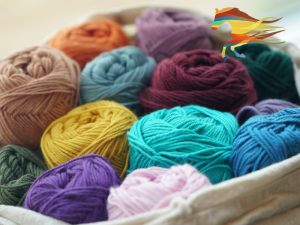 means I am also a content creator so here’s the content…”.
means I am also a content creator so here’s the content…”.
As well as Reels, make sure you are keeping up to date with the best hashtags to use for your business. As a rule of thumb, we suggest dividing your hashtags evenly between three areas: hashtags that are specific to the content/post/product (e.g. mohair yarn), hashtags that are about your business or sector more widely (e.g. British wool), and hashtags that your ideal customer is likely to identify with (e.g. knitters of Instagram). However, it is also worth mixing things up on occasion and trying out new hashtags to see how this impacts your views.
If you have a website or your products can be ordered online, make sure you get shopping links set up for your Instagram page and use them. This is another area that Instagram is pushing. It has been a slightly glitchy option in the past, but the recent updates seem to have reduced most of the bugs.
If your customers can’t shop through shoppable links for whatever reason, make sure you make it very clear and easy for them to find out how/where they can buy products. The harder you make it for them to purchase, the more abandoned orders you will have.
A great way to increase engagement is to look for collaboration opportunities. This could include offering a competition in conjunction with a publisher or magazine that fits your target market. In this case, the publishing company gets free content, and you get to piggyback off their online following.
Alternatively, you might be able to team up with another related or complementary business to offer a joint promotion or similar. In this, you both benefit from the combined impact of your respective audiences. For a wool business, this could mean teaming up with other fibre businesses to offer a mixed selection pack of fibres, or working with a pattern creator to offer a knitting pattern with your wool as a package, or even running an offer alongside a needle or equipment brand. The options really are endless; just make sure you choose a collaborator who has a very similar ideal client to you, but who offers a different product.
Competitions are another good option for a fast form of engagement, though be careful you don’t become overly reliant on them, otherwise, you will end up with too many followers who are only there for the giveaways.
We offer a marketing coaching package where we can teach you to write blogs and help you come up with your content ideas, amongst other benefits; check it out here. Or we can even simply write blogs for you on a regular basis. Contact us for a quotation here.